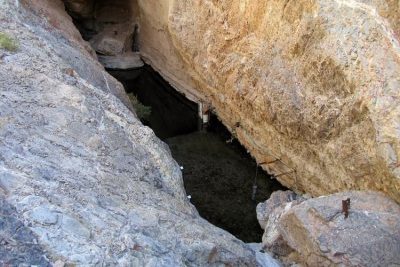Dasht-e Lut: A Martian Terrain and the Hottest Place on Earth
Share

Dasht-e Lut desert in Kerman Province, Iran. (Erik Albers / Wikimedia Commons)
Alfons Gabriel, a Viennese physician and adventurer, found himself spellbound by Iran’s Lut desert during the 1920s and 1930s. He wasn’t the only one. Seven centuries ago, famed traveller Marco Polo made his journey through the desert on a camel’s back. Gabriel’s dreams of conquering the central Lut Desert saw light on March 1937. He barely made out alive from a place he later called “a confused mass of impassable tangled dunes.”
Weather and topography
The Lut Desert in the southeast Islamic Republic of Iran takes the crown of being the hottest place on Earth. Here the mercury rises up to 70 °C (159 °F) and it is hot enough to fry an egg. Also known as Dasht-e Lut, Persian for “Emptiness Plain,” the Lut Desert spans up to an area of 5,400 sq km and is bereft of wildlife and vegetation.
On July 17, 2016 UNESCO inscribed Dasht-e Lut in the World Heritage List. Despite its scorching temperature and abiotic living condition, the Lut desert is an arid beauty with rock formations, salt plains, and sand dunes inching upwards and standing tall at 300 meters. A wide variety of dunes are displayed here. These include linear, compound crescentic, star, and funnel-shaped dunes. A nebkha dune is also formed here when sands are trapped around plants.
Since the desert is an arid subtropical area with almost no vegetation the strong winds blowing between June and October creates some visually stunning aeolian yardang landforms. A yardang is similar to sand dunes but it is elongated and its steep side faces the wind direction. It’s a Swedish explorer Sven Anders Hendin who is credited with introducing the word yardang to the English language. The yardangs in the Lut desert are so large that its magnificence can be viewed from the space.

Yardang in Dasht-e Lut Desert. (Ninara / Flickr)
This desert is also known for its sinkholes, parallel ridges and furrows in contrast to the eastern part of the desert which is a low plateau with salt flats. With no one around to monitor the temperature in this parched area, maintaining a weather station is impractical.
However, Moderate Resolution Imaging Spectroradiometer (MODIS) on NASA’s Aqua satellite measured the temperature from 2003 to 2010, during which it was found to have the hottest surface on Earth. The highest temperature recorded was 159.3 degrees Fahrenheit (70.7 °C) officially recorded in 2005.
The hottest region in Dasht-e Lut
The hottest part of Dasht-e Lut is a 480 km² area called ‘Gandom Beryan’ which means scorched wheat in Persian. There is a local legend regarding the origin of the name. A caravan of camels carrying loads of wheat had an accident due to which they had to leave their wheat in the Gandom Beryan area. Few days later the abandoned wheat caught the attention of another caravan passing by. By then the wheat had scorched due to heat, the place got its name thereafter.
Although the region has in past been called a place of “no life,” one where even bacteria don’t form a culture, there exists flora and fauna adapted to survive these harsh conditions. A team of researchers found that beneath the bone-dry landscape lies a “hidden sea” a shallow layer of saltwater that may help sustain life.

Caravanserai, a resting place for travellers in Dasht-e-lut. (Erik Albers / Flickr)
Conservation and protection
Visiting Lut Desert is off limits during summer and come winter the temperature plummets below zero. Not being easily accessible to the major population centre coupled with its extreme weather conditions leaves much of Lut desert easily protected. Settlements are allowed only on the western part of the desert. Apart from that, the state owns a greater part of Lut desert. A buffer zone has been established with 15 villages and Shahad town with nearly 6000 dwellers.
The Forests, Range and Watershed Management Organization; the Iranian Department of Environment; and the Iran Cultural Heritage, Handicrafts and Tourism Organization (ICHHTO) are the three principal agencies sharing conservation and management responsibilities. ICHHTO has inscribed the Lut Desert on its national heritage list. The responsibility of preventing illegal exploitation of desert falls under the Forest, Range and Watershed Management Organization.
It’s been noted through findings from climate change module that as temperature rises, tracts of the uninhabitable area in the Middle East will expand.
Enjoyed this article? Also, check out “Vast Oil Reserves Buried Under Rub’ al Khali the Largest Sand Desert in the World“.
Not Recommended Visit:
Dasht-e Lut | Desert in Iran
Fact Analysis:
STSTW Media strives to deliver accurate information through careful research. However, things can go wrong. If you find the above article inaccurate or biased, please let us know at [email protected]













